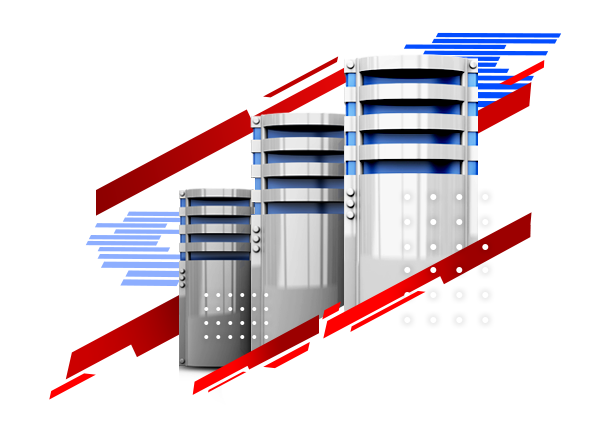
It may have happened to you that you have come across different terms while shopping on the Internet. These terms include various things such as speed, bandwidth, volume, traffic, etc. Each of these items has a specific effect on your internet usage. One of the important issues is bandwidth, which we will introduce in this section and what is bandwidth? We examine its most important differences with speed and traffic.
What is meant by bandwidth?
Table of Contents
Network bandwidth is a measure that shows the maximum capacity of a wired or wireless communication link to transmit data through a network connection in a given period of time. Typically, bandwidth is expressed as the number of bits, kilobits, megabits, or gigabits that can be transferred in 1 second. Synonymous with capacity, bandwidth describes the speed of data transfer. Of course, bandwidth is not a measure of network speed, and this is a common misconception among people.
In fact, bandwidth is the data transmission capacity of a computer network in bits per second (Bps). Bandwidth is a measure of the amount of information that a network, a group of two or more devices communicating with each other, transmits. Data is transferred from A to B just as water flows through pipes from a supply point to different taps. The volume being transferred varies and affects how well a transmission medium, such as an Internet connection, works.
What are the types of bandwidth?
Bandwidth is classified into two important types: shared and dedicated.
Shared bandwidth
This type of bandwidth is provided by internet service providers. This type of broadband network has different communication channels that are used to transfer data packets. The amount of bandwidth offered in this model depends on the type of service provider. This rate may vary from 10 to 300 Mbps. This type of service has a low cost, but at the same time, security is also reduced and they are highly vulnerable.
Dedicated bandwidth
This type of bandwidth is used by companies that have professional Internet users. These services have a high price and are used for a long time. Of course, their security is also very high for data transfer.
The difference in bandwidth and speed
The terms bandwidth and speed are often used interchangeably, but this is completely wrong. The reason for this common mistake is partly due to Internet service providers (ISPs) advertising that conflate the two by referring to faster speed when they mean bandwidth.
Bandwidth is the amount of information you receive per second, while speed is the speed at which that information can be received or downloaded. Let’s compare it to the example of filling the bathtub. If the bathtub faucet has a wide opening, more water can flow faster than if the faucet is narrower. Think of water as bandwidth and water flow rate as velocity.
Basically, speed refers to the speed at which data can be transferred, while the definition of bandwidth is the capacity of that speed. According to the above example, velocity refers to how fast water can be pushed through a pipe. Bandwidth refers to the amount of water that can be moved through the pipe in a certain period of time.

What is hosting bandwidth?
Hosting bandwidth or monthly traffic is the amount of information that is transferred through your hosting in a month. Let’s assume that a website downloads 15 gigabytes of data and 5 gigabytes of data is uploaded. The bandwidth of its host was 20 gigabytes in one month. The amount of hosting bandwidth is limited and it is exactly the same amount that is purchased at the beginning of the month. After completing this amount, you must activate it through the service provider company. In fact, the volume of Internet hosts is known as the bandwidth of hosts.
What is a broadband site?
Site bandwidth is also the amount of traffic provided by the service provider. The bandwidth of your site is the amount of information that is transferred on your host at a given time.
The difference between bandwidth and traffic
Site traffic is introduced with different concepts. Traffic is the amount of volume that an internet service provider provides to you, and secondly, how many different users visit your site. For virtual or dedicated servers, traffic is defined as the amount of data that passes through your network card during a certain period of time, for example a month. This concept is said for shared web spaces to the extent that it is downloaded from the site. This amount can be 100 GB per month. On the other hand, bandwidth refers to the amount of data that passes through the network card per unit of time.
What type of bandwidth is right for me?
To buy dedicated bandwidth, you have to pay more; Therefore, before any move, it is better to familiarize yourself with the following items and think about them.
Number of network users
The more the number of network users, the more the traffic generated in the network bands. You must have had the experience by now that when someone at home is downloading a movie, the internet speed slows down for you too.
With this account, if you are an organization with a large number of users, you will need a dedicated bandwidth so that the speed of the Internet network does not drop while uploading and downloading files.
Type of user usage
If the user’s activity is limited to sending and receiving emails, naturally you will not need a lot of bandwidth. But if you have an activity like uploading and downloading large files, you will need more bandwidth.
The amount of the budget
Well, the last thing you need to be aware of is the cost! You have to pay for your bandwidth on a monthly or yearly basis. So pay attention to it in your budgeting and choose the right bandwidth according to your budget.
How is bandwidth measured?
While bandwidth was traditionally expressed in bits per second (bps), modern network links now have much more capacity, which is why bandwidth is now more commonly expressed in megabits per second or gigabits per second. will be
Broadband connections can be fully symmetrical, meaning that the data capacity is the same in both download and upload directions, or asymmetrical, meaning that the download and upload capacities are not equal. In asymmetric connections, the upload capacity is usually less than the download capacity.
Advances in technology have made some bandwidth calculations more complex, which can depend on the type of network link being used. For example, using different types of light waves and time division multiplexing, optical fiber can transmit more data through a single connection at a time compared to copper Ethernet alternatives, effectively increasing its bandwidth.
Effective bandwidth, which is the highest reliable transfer rate that a link can provide in any transport technology, can be measured using bandwidth testing. During bandwidth testing, link capacity is determined by repeatedly measuring the time it takes for a particular file to leave the source and be successfully downloaded at the destination.
CATEGORY:Blog











